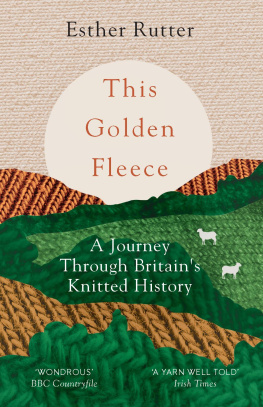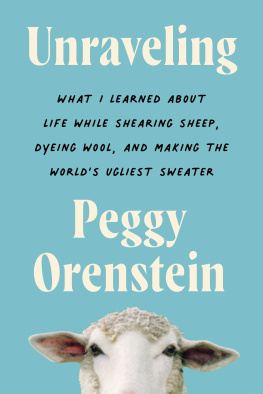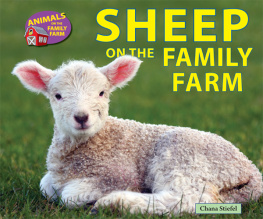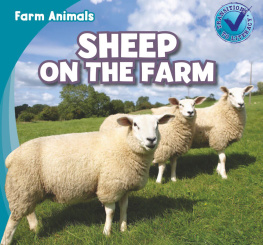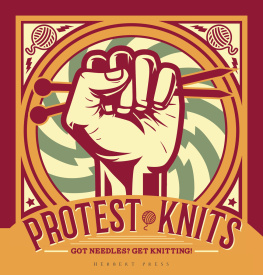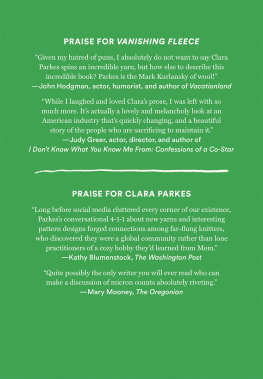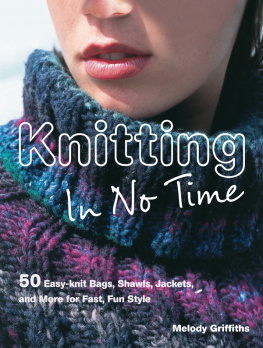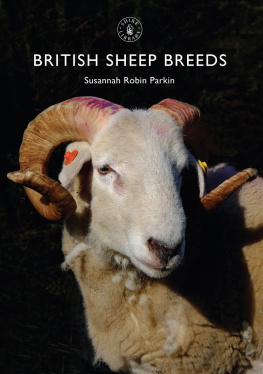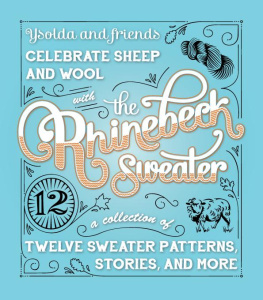ESTHER RUTTER studied English at Oxford Universitys Magdalen College and is currently Writer in Residence at the University of St Andrews. Now living in Fife, she grew up on a Suffolk sheep farm and retains an affection for all things woolly. You can follow her knitting adventures on Instagram @thisgoldenfleece and Twitter @thisgoldfleece.
A compelling literary journey through the social history of wool in the British Isles Karen Lloyd, author of The Gathering Tide
This is a book about wool and sheep, the making of Scotland, England and farming, textile manufacture, folklore and, crucially, the essential craft of knitting. The plying of wool had been a vital survival skill for over two millennia in Britain before the Romans showed up (bringing their own sheep with them, just in case) making this domestic skill a founding piece of civilisation. From fairytales to debate regarding national identity, from the year dot to the tragedy of the Scottish Clearances and beyond, the history of plain, purl and intarsia is woven together by Esther Rutter, whose own skill with needles, learned from practical experience, attests that this ancient craft is nothing less than a wonder of civilization. Beautifully written too Janice Galloway, author of This Is Not About Me
[Rutters] stops on her journey round Britain also knit together the past and the present, the social, historical and the personal, in an altogether engaging way The world of wool is, Rutter shows, an entirely intriguing subculture. It is the mark of a good writer that they can communicate their own fascination, and maybe even spread it, and this debut book marks her out as a non-fiction writer worth following Books from Scotland
Esther Rutter unravels the social history and allure of knitting, from Fair Isle to Cornwall via the Hebrides in her fascinating book Stornoway Gazette
An engaging and highly informative read, packed with information but made to connect as Esther tells her own story along with other knitters tales Knitting Magazine
A beautifully illustrated book that tells the story of wool in the British Isles Cotswold Life
You dont have to be a knitter to enjoy this wondrous book, although as one, I did smile through most of its pages Through [Rutters] words, we meet the people who have kept the craft alive, passing it down from one generation the next and, in doing so, keeping it alive for many years to come BBC Countryfile
A delightful, informative account Esthers personal tread is light, and the happy balance she has struck between observation and research makes This Golden Fleece a great pleasure to read. Whether you are a knitter yourself, interested in social history, enjoy travel writing with a particular focus, or want to know more about Britains sheep and the qualities and uses of their wool, I recommend it wholeheartedly Cornflowerbooks.com
A fantastic gift for the knitter and reader in your life a personal and fascinating story perfect for the yarn-obsessed Must read, Knitting Magazine
A heart-warming mix of travel, memoir and social history A highlight is the chapter on Revolutionary Knitting which focuses on the empowerment knitting has given women throughout history, from the French Revolution to more recent protests against a certain American President 4.5 stars, Scottish Field
This agile book unravels wools long history across Britain, mixing memoir, cultural history and crafting. Esthers study thrives on the localism of sheep, technique and language Cumbria Life
For Tom and Rose
chief recipients of my knitting
In Memoriam
Walford Arnold Griffiths
14.11.193201.05.2019
PLATE SECTION
ILLUSTRATIONS IN TEXT

Biographies of things can make salient what might otherwise remain obscure.
IGOR KOPYTOFF , The Cultural Biography of Things
It was December, the dog-end of the year. Across the country, offices hit their annual administrative climax. Work piled up: reports to finish, invoices to issue, Christmas cards to send. I scribbled my signature on letters to people I had never met, compiled spreadsheets, printed out an acreage of labels. I hated not only the grind of endless meetings and stuffing envelopes, but also the secondary nature of this job, centred on assisting someone elses working life. At home in the evening, I sat and stewed as I knitted a soft blue scarf, a Christmas present for my mother-in-law. Knitting normally soothes me, but the repetitive knit, purl, knit of the scarf did not occupy enough of my mind to wrest away my frustration with work. My mind turned to January, with its promise of newness. I did not want to spend another year in that office. I wanted out.
Christmas arrived, and I headed south to pay my respects to parents, siblings, friends. After a week squashed into a small house whilst rain thrummed on the windows, I travelled with my husband to visit his family in Grasmere, Cumbria. New Years Day dawned clear and cold, and we strode out to shake off the old years languor. The frost-nipped air blew in chilly celebration as we got out of the car at Rusland Cross and took our first steps of the year towards High Ickenthwaite.
Bundled into coats, with scarves wrapping us like untidy parcels, we were pushed along by brisk winter winds. After an hour, we reached the wood at Heald Brow, which was ringed with a fence topped with rusting wire. Caught in the fences barbs were tufts of wool, silver in winters weak sun. Sheep, at the bounds of their territory, scratched their itches here, leaving traces of themselves on the wire. I pulled away some fibres and rolled them on my palm. Grey, black and white, the strands curled in my hand. They felt waxy against my fingers, soft and greasy with lanolin. I balled the fibres in my pocket, carrying them with me like a charm.
Cumbria is a landscape shaped by sheep. The countys hilly slopes require a particular type of farming: upland shepherding, quite different from its lowland cousin. Old Westmorland and Cumberlands drystone walls enclose the more fertile land around farms, keeping sheep away from the valleys cultivated fields to graze on the fells. This higher pasture is common land: sheep are free to graze as far as their feet can take them. Native Herdwick sheep need no fences: they are heafed or hefted, equipped with internal compasses calibrated to their own acreage.
By half-past three, the gloaming began to gather in, driving us indoors. Warm and weary, I let the weather pin me to the sofa, where I looked again through my Christmas presents. Inside a paper bag with the tag love from Mum were four balls of wool peaty black, charcoal, dove grey, white. Banded with paper round the middle, this was Shetland Heritage yarn from Jamieson & Smith. Printed on the band was a line of tiny symbols: a shepherds crook, a hand dipped in water, an iron crossed through, and my favourite three tiny Shetland sheep with horns and curling fleeces, staring down the crook. Three renegades from Britains north-east edge, their horns a proud trumpet and a warning.
I took a sniff. A strong outdoor smell, rich and greasy, caught my nostrils. It was an unmistakably sheepy funk, the same scent from Heald Brow wood. Woolly fibres waved and snaked away from the yarns central strand, black flecked with white, cream specks on brown. This was soft and sturdy Shetland oo, the w and l clipped off the English word. Familiar yet strange; the wool had come from among some seven hundred crofts and farms in Shetlands scattered archipelago, caught between the Atlantic Ocean and the North Sea. My four balls of yarn, fading dark to light, yielded to the pressure in my palm then bounced back, comfortable in their shape. My fingers prickled with the urge to knit them up. What would I make from this hardy wool?

